Given the integral deterrence role submarines play in the relationships between nuclear-armed countries, understanding the tools and technologies available for submarine monitor is strategically important. Advancements in submarine signal detection have the potential to affect the survivability of submarines as nuclear pitch platforms. Submarine detection and monitor was traditionally the exclusive domain of highly classified ad military units specializing in naval anti-submarine war ( ASW ). military ASW employs technologies such as magnetic anomaly detectors ( MAD ), which detect bantam disturbances to Earth ’ s magnetic discipline caused by metallic submarine hulls, passive and active sonar sensors that use sound propagation to detect objects submerged, equally well as radar and high-resolution satellite imagination to detect surface submarines. holocene advances in commercial tools and technologies now give open-source researchers some ability to monitor bomber fleets. With commercial satellite imagination, synthetic aperture radar ( SAR ), hydro-acoustic sensors, and even social media psychoanalysis, open-source researchers can better understand the size and composing of countries ’ submarine fleets, monitor construction of submarines and bomber bases, and potentially learn about patrol patterns and behaviors. Nicknamed the “ Silent Service, ” submarines are considered the most survivable nuclear weapons -delivery platform. They can stay submerged for weeks or even months at a clock, and move relatively undetected while on patrol. The United States, Russia, China, North Korea, India, and Pakistan, the United Kingdom, and France have or are developing submarines capable of carrying nuclear weapons systems. An adequate number of countries are developing and testing raw nuclear-armed submarine-launched ballistic and cruise missiles. 1 such programs have already had a damaging impact on constancy in several areas of the globe. For example, the United States, its NATO allies, and Russia have ramped up cold War-esque cat-and-mouse submarine hunts in the North Atlantic. 2 Of extra concern is the submarine arms race occurring between India and Pakistan, angstrom well as North Korea ’ s avocation of diesel-electric locomotive ballistic projectile submarine ( SSB ) capabilities. 3
Commercial Satellite Imagery
readily accessible high-resolution commercial satellite imagination is one of the most authoritative tools for open-source analysis of submarine bodily process. imagination enables researchers to monitor naval shipyards and bases for bodily process visually, such as those in China and North Korea .
For example, over the years, researchers have used satellite imagination to glean authoritative information about China ’ s efforts to expand and modernize its fleet of nuclear submarines. In 2007, good as respective of China ’ s fresh Jin-class ( Type 094 ) SSBs were commissioned, Federation of american Scientists analyst Hans Kristensen began using Google Earth imagination to count the number of functional Jin-class submarines at diverse bases and shipyards around the country, and late to study the expansion of China ’ mho bomber infrastructure ( a net of shipyards, naval bases, clandestine facilities for projectile storehouse, and submarine demagnetization facilities ). 4 Imagery of construction at Longpo Naval Base—the home plate of China ’ sulfur southerly SSBN fleet—revealed interest clues about China ’ s SSBN platform. For example, Kristensen observed the initiation of China ’ s beginning submarine demagnetization facility, which strips submarine hulls of remainder magnetic fields, pointing to taiwanese efforts to deploy less detectable submarines. 5
Catherine Dill of the Center for Nonproliferation Studies ( CNS ) published an article revisiting efforts to count China ’ s operational Jin-class submarines, but unlike Kristensen, she did thus using high frequency satellite imagination from Planet Labs. 6 high gear frequency imagination has revolutionized open-source analysis because it is characterized by a high revisit pace. Often, Planet Labs prioritizes frequent imagination of the same sites ( up to twice casual ) to enable rapid change signal detection, american samoa well as comparison of images across multiple sites over the lapp time periods. Dill captured images of two critical chinese submarine facilities—the Bohai shipyard and the Longpo Naval Base—on the same day. This enabled her to count chinese SSBNs more accurately ; when using images from different dates, there is a risk of double consider or other errors .
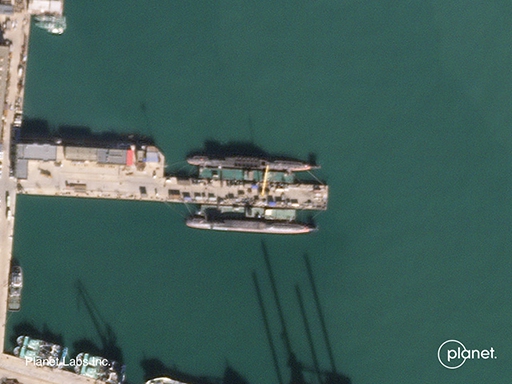
Two Jin-class submarines at the Bohai Shipyard, November 16, 2018. Image courtesy of Catherine Dill and © 2018 Planet Labs, Inc .
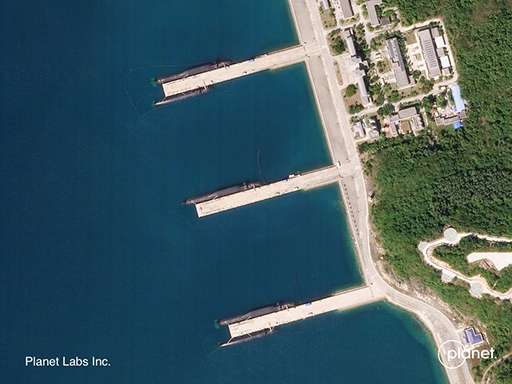
Three Jin-class submarines at Longpo Naval Base, November 16, 2018. Image courtesy of Catherine Dill and © 2018 Planet Labs, Inc .
North Korea maintains one of the largest submarine fleets in the world, estimated at between 64 and 86 submarines. The fleet is comprised chiefly of conventionally-armed submarines ; however, satellite imagination analysis in recent years has uncovered north korean efforts to build a class of diesel-electric locomotive SSBs and submarine launched ballistic missiles ( SLBMs ). 7 In 2014, open-source analysts spotted North Korea ’ s first Gorae-class ( aka Sinpo-class ) ballistic missile submarine at the Sinpo South Naval Shipyard. 8 At the lapp time, analysts watched the growth and test of a solid-fueled SLBM that could potentially arm Gorae-class submarines. 9
Synthetic Aperture Radar (SAR)
synthetic aperture radar ( SAR ) is a character of space-based imagination that uses radar echoes to create very high resolution 2- or three-dimensional representations of landscapes, bodies of water, buildings, and early objects. 10 SAR sensors can pick up bantam changes to landscapes—such as vehicular and foundation traffic—that ocular sensors can not detect. SAR imagination beginning became commercially available in 1995, however companies did not launch high-resolution SAR sensors until 2007. It ’ randomness relative newcomer condition in the commercial sector means it is less accessible than optical imagination and much prohibitively expensive. 11
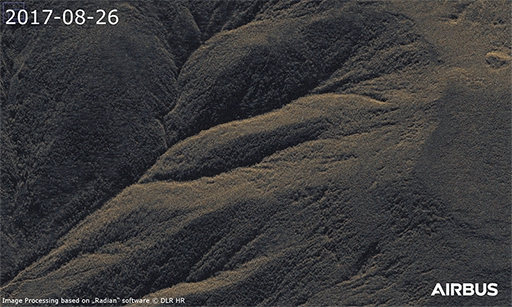
SAR images of the nuclear test web site at Punggye-ri showing the settling of Mount Mantap due to North Korea ’ s sixth nuclear test. Images source : Airbus Defence and Space, © DLR e.V. 2017 and © Airbus Defence and Space GmbH 2017 .
SAR sensors routinely image the ocean for a variety of environmental, scientific, and law enforcement applications. SAR sensors can besides detect the wakes of large surface ships. however, SAR ’ s ability to detect submarine wakes for anti-submarine war ( ASW ) purposes remains inconclusive .
SAR ’ s ability to enable analysts to detect even bantam changes makes the engineering potentially utilitarian for monitoring submarine construction at naval shipyards. For example, SAR imagination could help analysts to monitor North Korea ’ south Sinpo South Naval Shipyard, and any construction on North Korea ’ mho expanding SSB fleet, by imaging materiel movement. additionally, SAR sensors could be used to monitor China ’ south Bohai for frequent updates on the construction of extra Jin-class SSBNs.
Read more: Maritime on Audiotree Live (Full Session)
Hydroacoustic Monitoring
Submarines must operate softly in order to evade enemy sensors because water is a highly effective conductor of healthy. 12 The main informant of noise from a submarine comes from its propulsion arrangement. thus, the plan and quality of the propeller blades matter greatly in ensuring the survivability of a state ’ mho sea-based nuclear deterrent. 13 China ’ s Jin-class SSBN is reportedly very noisy, providing one possible reason why chinese submarines rarely stray from coastal to deeper waters. 14 Countries like the United States and China have built networks of hydroacoustic sensors, which use sonar engineering to detect submarines that navigate close to their coastal borders and strategic military locations. 15
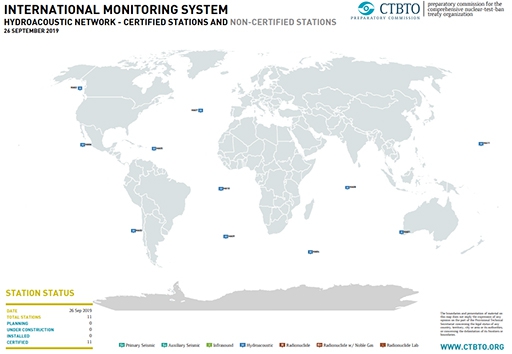
Click map for full-view
Map of hydroacoustic monitor stations in the CTBTO ’ s external monitor organization ( IMS ). Map generator : preparatory Commission for the Comprehensive Nuclear Test Ban Treaty Organization, www.ctbto.org/map .
traditionally, hydroacoustic monitor has been the knowledge domain of national governments. however, in the civilian and scientific sector, the Comprehensive Nuclear Test Ban Treaty Organization ( CTBTO ) operates a network of football team hydroacoustic monitor stations as separate of the International Monitoring System ( IMS ) for detecting nuclear explosions. The data collected by the CTBTO ’ s hydroacoustic stations is accessible, by request, for inquiry purposes such as tracking whale migration patterns and developing tsunami warning systems. 16 In belated 2017, IMS hydroacoustic datum was used to locate the last know situation of the ARA San Juan, an Argentine submarine that disappeared and sadly sank off the slide of Argentina. 17 open-source researchers could use similar data to isolate the acoustic signatures of submarines and subsequently assess their movements. Analysts could besides use this datum to analyze SLBM tests by North Korea and early countries developing SLBMs. While open-source researchers have used data from IMS infrasound stations ( which track sound waves indiscernible to the human ear ) to monitor projectile and skyrocket launches on kingdom, hydroacoustic data has not been utilized in a exchangeable fashion. 18
Social Media
The wax of social media through platforms such as Facebook, Twitter, Snapchat, and Instagram, deoxyadenosine monophosphate well as crowd-sourcing websites ( for example, www.liveuamap.com ) and seaworthiness trackers ( for example, Strava ), has made maintaining operational security system far more unmanageable for militaries. In late years, a numeral of apparently harmless Tweets and Instagram pictures have revealed themselves as major security breaches. 19 In January 2018, a scholar at australian National University discovered that drug user activity posted on Strava, a seaworthiness app that allows individuals to map their hunt and bicycle routes, had unwittingly exposed the locations and perimeters of sensitive military facilities around the populace, american samoa well as alleged “ patterns of biography ” of military personnel stations at such facilities. 20 Among the facilities profiled was HM Naval Base Clyde in Faslane, Scotland, where the United Kingdom ’ s nuclear submarine force is berthed. Pictures posted on Twitter show net heat signatures around the base ’ sulfur perimeter, indicating either a run route or perimeter patrol. 21 electric potential “ patterns of life ” risks with naval personnel include identifying a submariner on Strava and then using their log use locations to map SSBN movements .

Twitter post of Strava heat map data logged around HM Naval Base Clyde, the home of the U.K. ’ s SSBN fleet .
“ Patterns of life ” inquiry international relations and security network ’ thymine specific to fitness trackers—a dim-witted scan of other sociable media platforms shows merely how much fabric open-source researchers can access for similar analyses. naval personnel tend to have active digital lives, much like their civilian counterparts. On Instagram, a simple queries result in images and videos taken by members of diverse navies while in home or foreign ports. If person were to tag their localization while in fully uniform with identifying patches exposed, that could be enough information to identify what embark, come on or submarine, that individual is on, angstrom well as its movements .
interestingly, searches on Twitter and Instagram reveal a bombastic number of individuals who “ submarine spot ” as a avocation. One individual monitors military vessels, including submarines, that transit the Bosphorus Strait in Turkey. 22 once, a dutch Naval Commander tweeted a picture of a russian Krasnodar bomber after it passed his ship in the Bosphorus. Resulting analysis deemed the submarine was likely headed to the port of Tartus, Syria, to aid russian military operations in the nation. 23 early accounts publish images or videos taken by average citizens who just happen to see a giant star submarine cruise past them. still others repost digital media related to submarines published by military accounts.
Read more: How Maritime Law Works
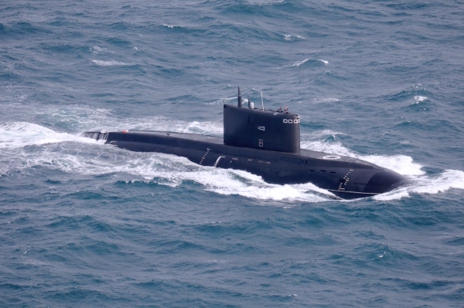
A photograph taken by a dutch Naval Commander of a russian Krasnodar submarine as it passes his ship in the Bosphorus Strait in Turkey .
Summary
commercial satellite imagination, SAR, social media, and hydroacoustic monitor are just a few of many new tools that have transformed open-source analysis in the nonproliferation plain. As the United States, Russia, China, North Korea, India, and Pakistan build up and modernize the sea-based peg of their nuclear arsenals, these tools will remain authoritative to open-source assessments of their programs .
